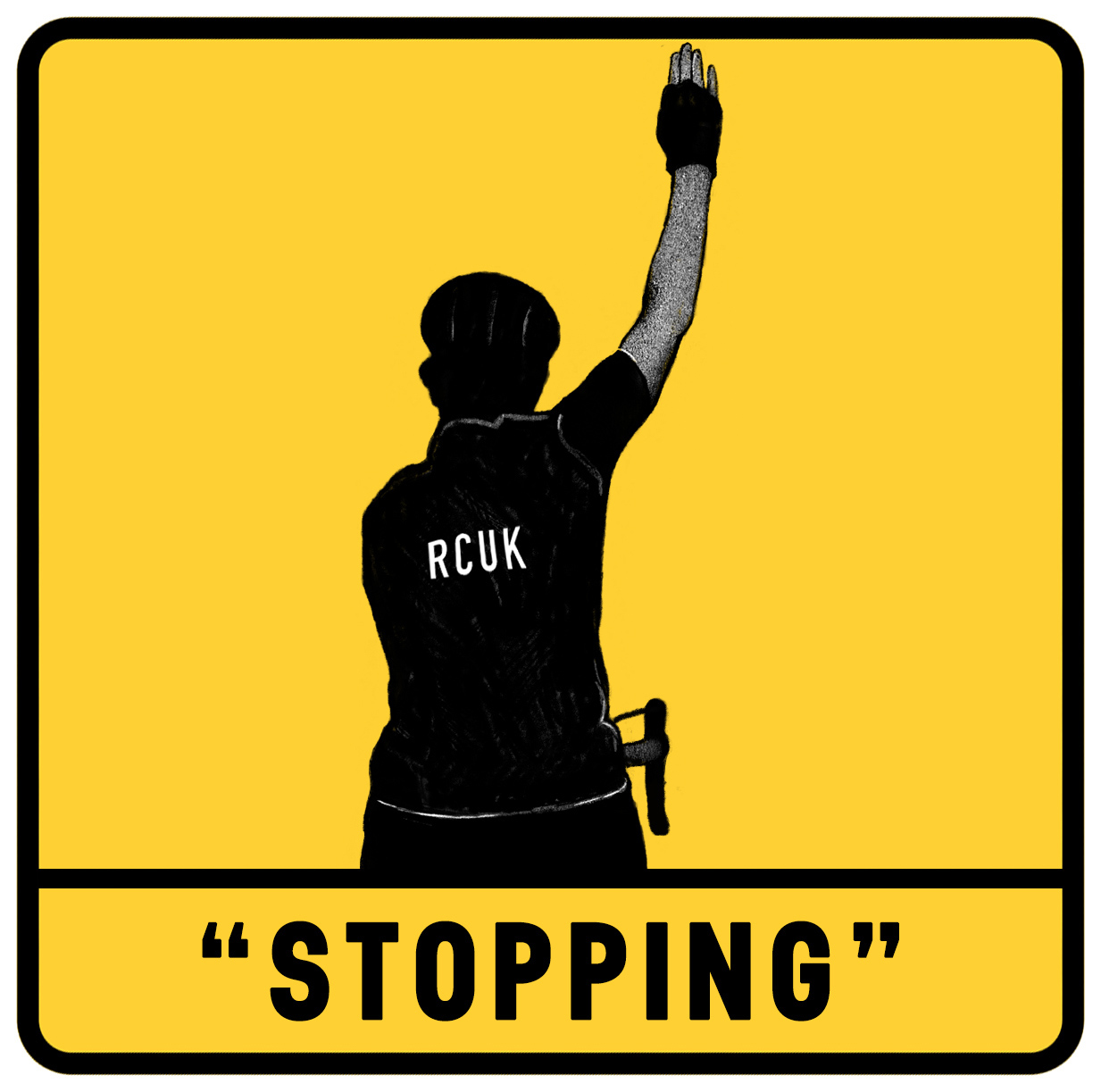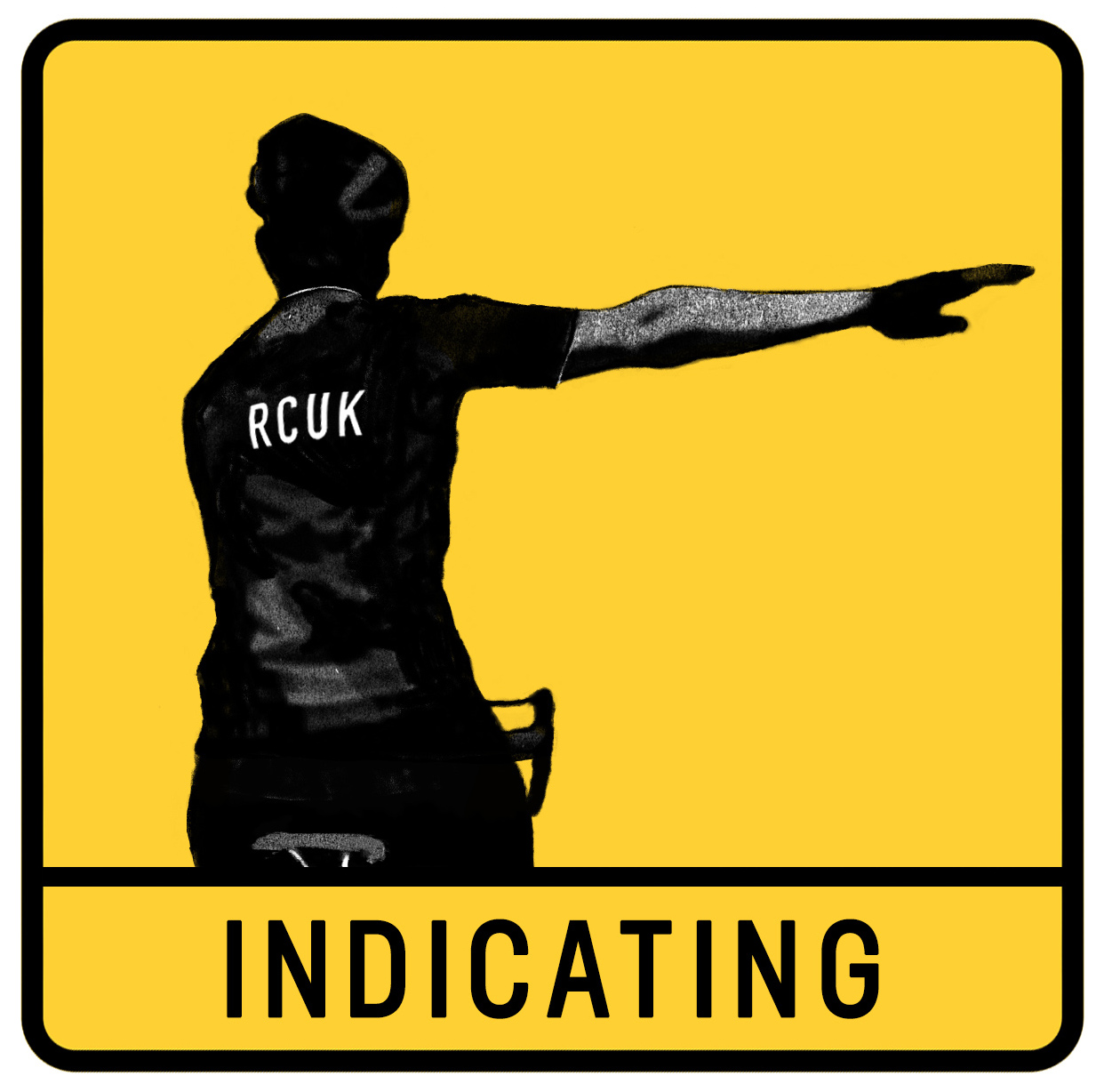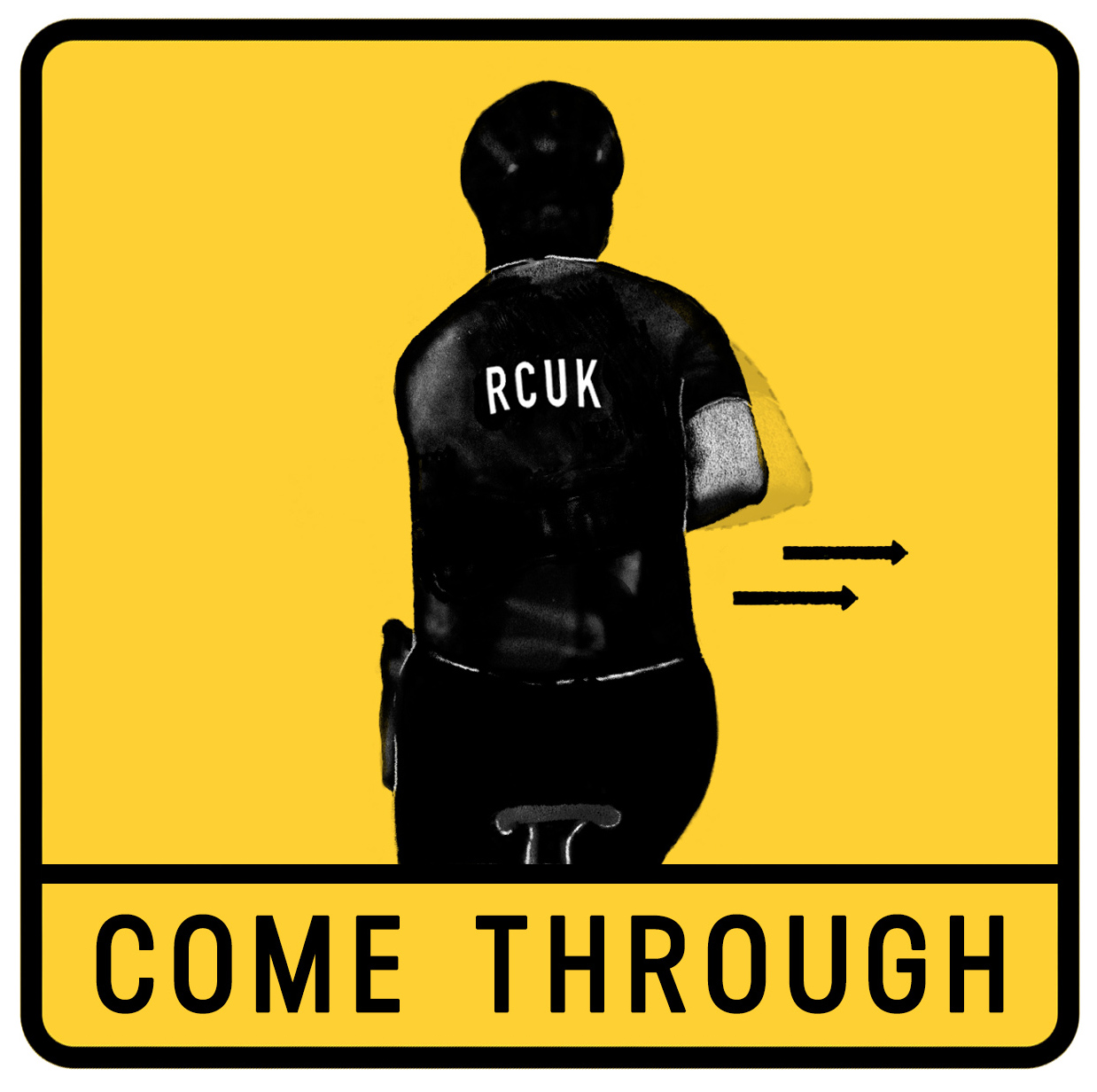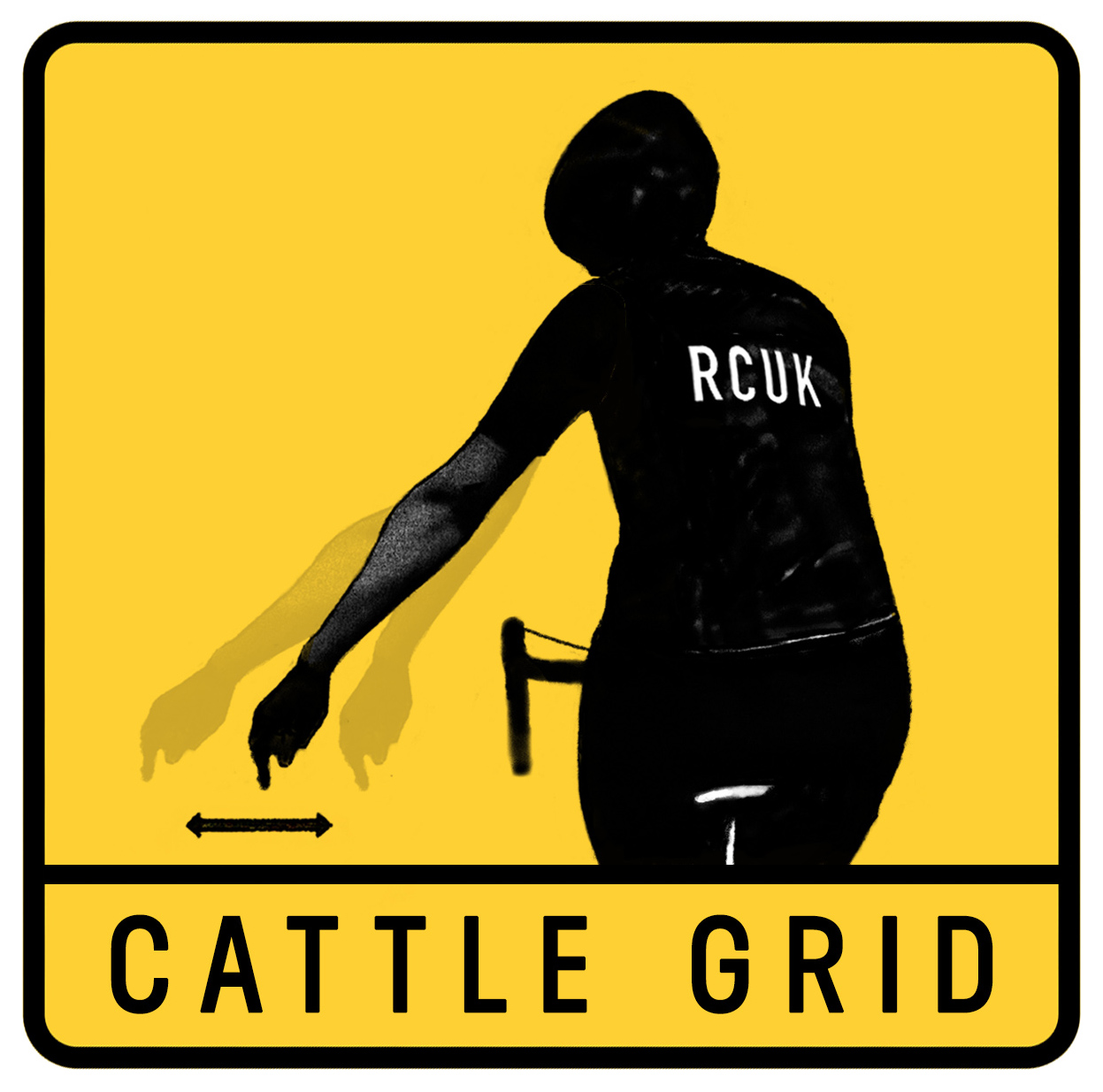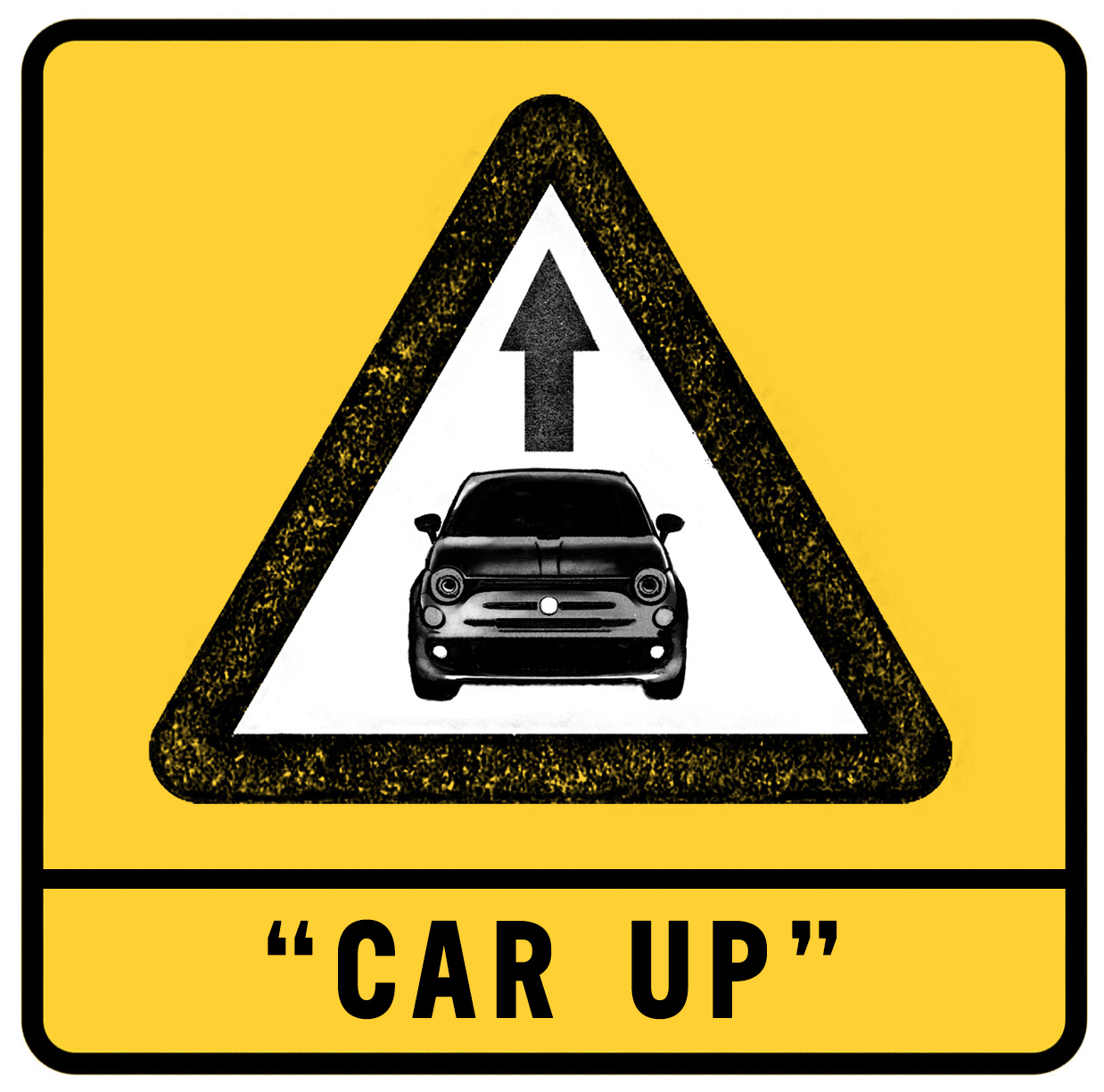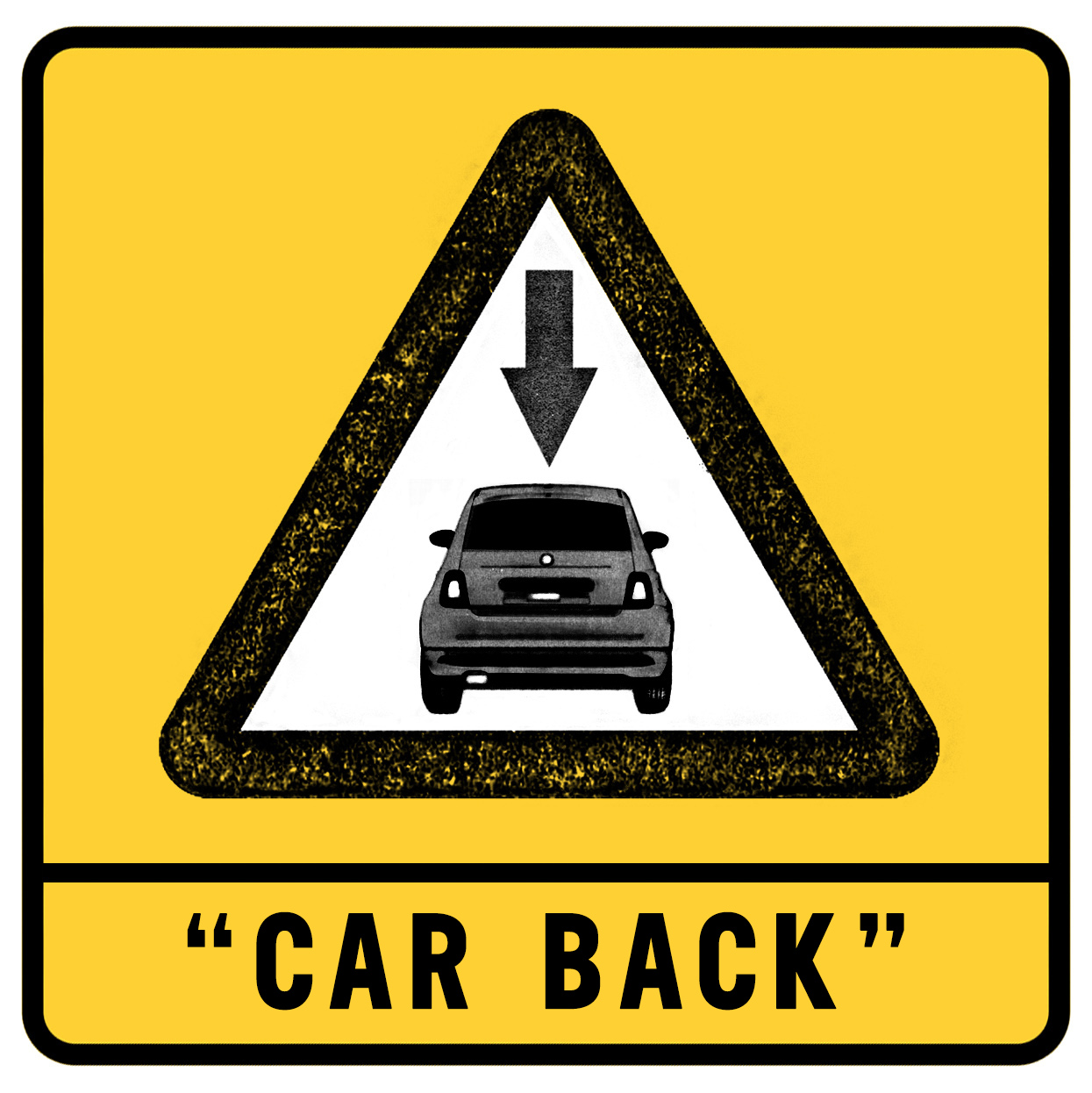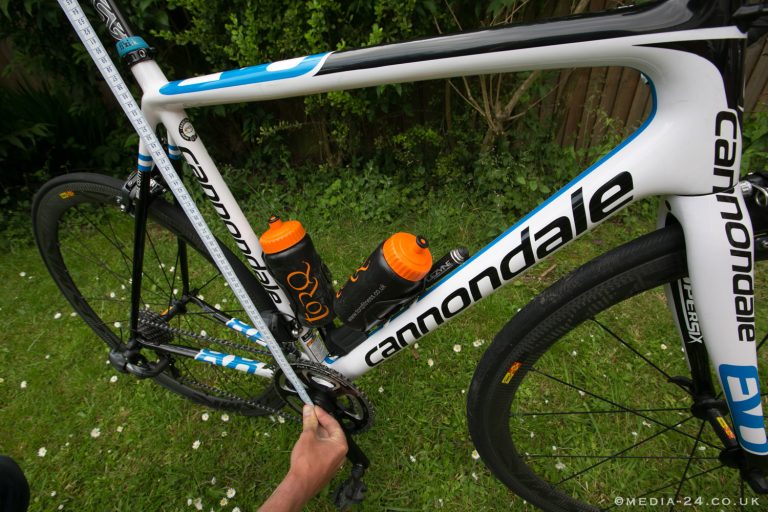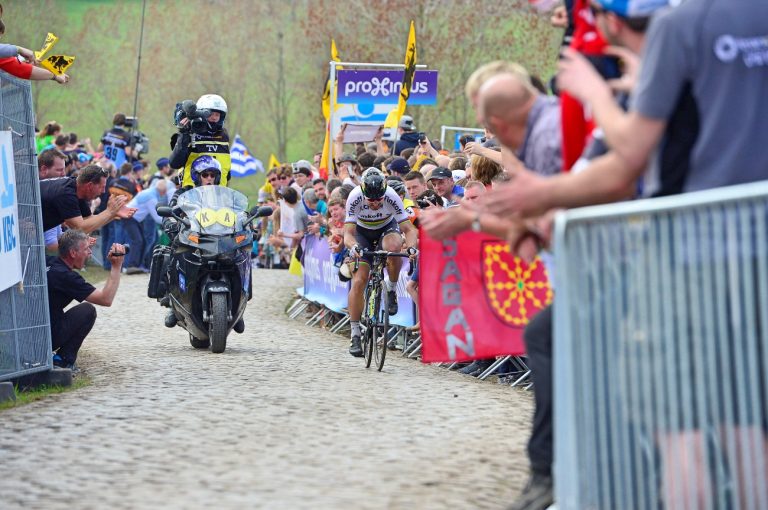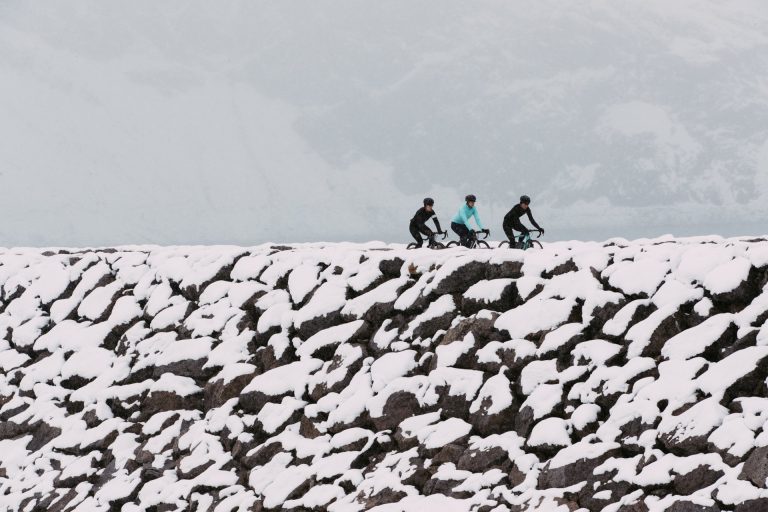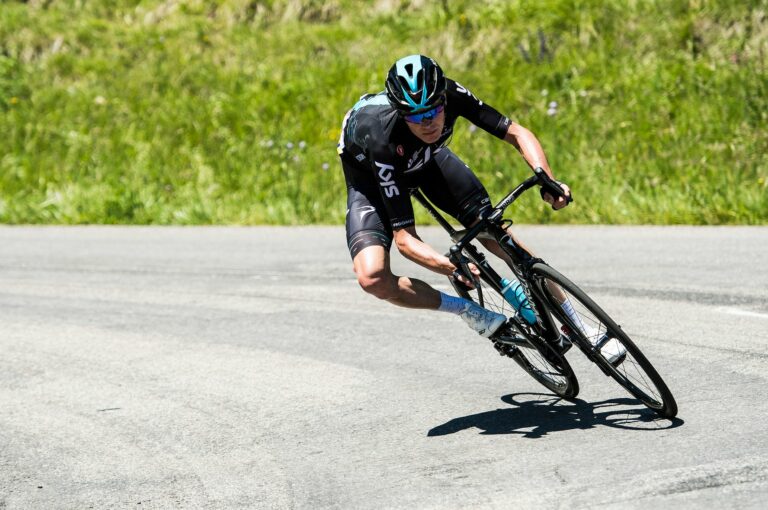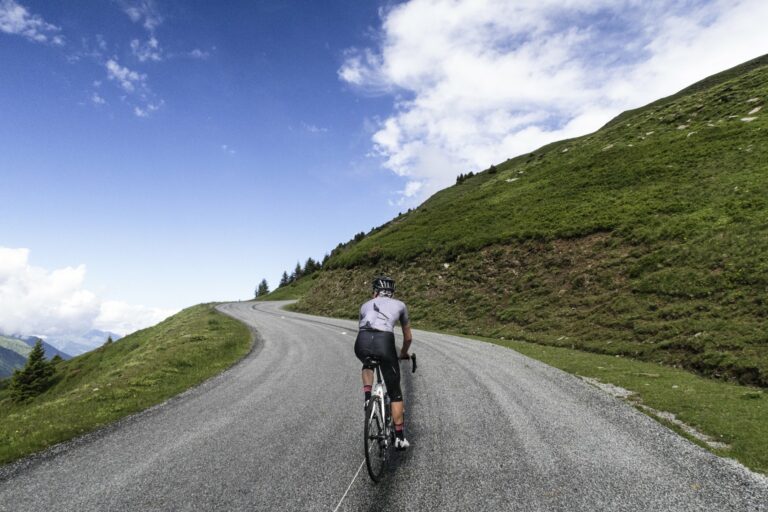Group riding is one of the best and most enjoyable aspects of road cycling – whether you ride regularly with your club each weekend, train with a select few buddies as you build-up to your next race, or you’re making the trip to ride a sportive with a group of friends.
To newcomers it can be surprising, and potentially confusing, just how noisy a group of cyclists can be. With various signals and calls to warn the group of the hazards cyclists are exposed to, it’s vital you know what each one means, while being able and confident to make a call when you’re the rider on the front.
The nature of riding in a group means, if you’re not on the front of the bunch, you may not always see a hazard, but a well-drilled group using signals and calls correctly will ensure all riders remain safe on the road.
Here’s our guide to the key signals and calls you need to know to stay safe on the road. All illustrations by Matt Ward / www.linguistine.com.
Signals
Slowing
With your arm outstretched, palm-down, and slightly behind you so cyclists behind you get a clear view of your hand, move your hand up and down at the wrist to indicate that you’re about to slow. Use this indication when you’re confident that you’re going to be pulling the brakes in order to significantly slow your speed.
Optional call: “Slowing!”
In addition to the signal, and if braking is more urgent and you haven’t got time to indicate safely, call out “Slowing!” loudly and sharply. This will give riders an additional stimulus to react to, apart from your rear wheel suddenly rushing towards them.
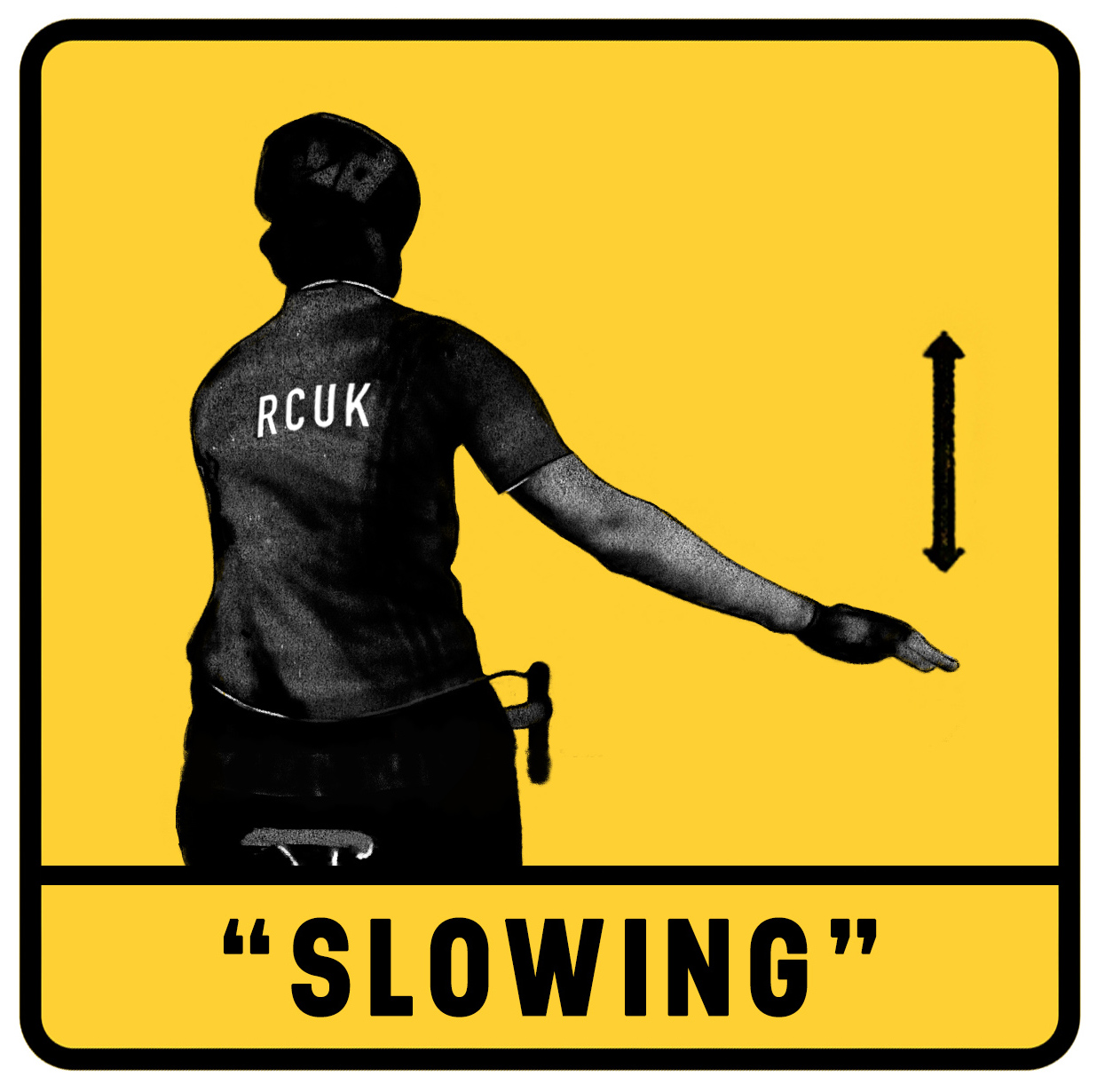
Top product picks this month: Kryptonite bike locks | Bike cleaning gear | New-season cycling glasses


